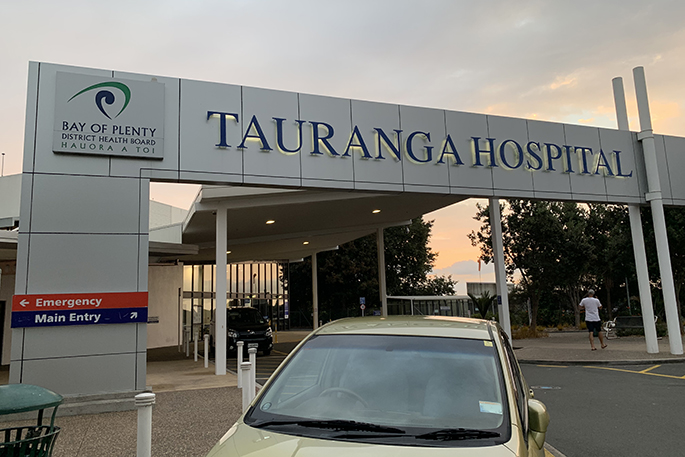The number of patients waiting more than the four-month benchmark to see a specialist has jumped 46 percent in the last year.
Te Whatu Ora's latest quarterly clinical performance data - released on Tuesday - shows there were 51,274 people in June who had been waiting longer than the benchmark, compared with 35,080 at the same time last year.
Preventable hospital admissions known as ambulatory sensitive admissions for babies and preschoolers shot up 35 percent, particularly in Auckland.
Pasifika children aged 0-4 were the worst affected, with their hospitalisation rate increasing 45 percent.
"There has been a particular increase in the rate of admissions for asthma, pneumonia, upper respiratory and ear, nose and throat infections, gastroenteritis, dehydration and cellulitis over the 2022/23 year - the first full year with no Covid-19 lockdowns in place," says the report.
The data covering 12 clinical measures (from immunisation coverage to emergency department wait times) provided "a snapshot of the current challenges in our health system,"says Te Whatu Ora interim chief clinical officer Dr Richard Sullivan.
"Our workforce and the capacity of our primary care and hospital system are still feeling the ripple effects of Covid-19. The pandemic had a significant impact on our waitlists and our workforce, as it did globally."
"There has been increased emergency department presentations and patient complexity, a surge in the number of young people needing mental health support, and the volume of treatments and outpatient appointments for cancer services has increased an average of 1.7 percent a year."
While demand has increased, Te Whatu Ora was delivering more services, says Dr Richard.
"In the year to June 2023, we delivered 316,286 planned care interventions compared to 297,265 in the year to June 2022. This equates to 19,021 more planned care treatments, a 6.4 percent increase on the previous year."
Snapshot
- Immunisation cover at 24 months - A small improvement in the quarter April to June 2023 compared to the same quarter in 2022 83.1 per cent versus 82.9.
- Ambulatory sensitive hospital admissions preventable if they had earlier treatment for 0-4 year olds: 7752 per 100,000 in the 12 months to June 2023 - up from 5725 per 100,000 the previous year
- Ambulatory sensitive hospital admissions for 45-64 year olds: 3739 per 100,000 in the 12 months to June, up from 3556
- Mental health wait times: - under 25 year olds accessing services within 3 weeks of a referral - 68.3 per cent - down from 72.4 percent
- Acute bed days (number of days a person spends in hospital, following an acute admission) - 440 per 1000 population, compared with 407 per 1000 last year
- Specialist appointments: Patients waiting longer than four months for first specialist appointment: increased from 35,080 in June 2022 to 51,274 in June 2023
- Planned care: The number of patients waiting longer than four months for treatment has increased from 26,356 in June 2022 to 28,095 in June 2023
- Emergency Department presentations: 331,220 April to June, compared with 314,452 in the same period last year
- Patients waiting less than six hours in ED: Worse 71.2 per cent compared with 75.9 percent last year
- Cancer treatment times: percentage of patients starting treatment with 31 days of clinical decision to treat: Worse 84 per cent compared with 87.1 percent last year
- People waiting longer than a year for treatment: no national figure
- Emergency Department Admissions patients admitted to hospital from the ED: "We are currently not reporting on clinical metric 12 - Emergency Department Admissions - due to ongoing challenges with validating the data used to produce this metric. We are working to gain consensus on a meaningful definition for this metric, so we can ensure it is applied consistently throughout the motū," says the report.



2 comments
Still Waiting
Posted on 02-11-2023 07:03 | By Thats Nice
Well, when a lot of our skilled medical professionals jumped on a plane when the borders opened on a one-way ticket and leave massive gaps in the system, I'm not at all surprised about the outrageous waiting times throughout the whole of NZ. The government has made it extremely difficult and expensive for overseas professionals to come into this country. The incoming government will have to sort this.
@That's Nice
Posted on 02-11-2023 23:06 | By morepork
The last official figures I saw were a shortfall of around 4000 doctors (never mind other medial workers. We shouldn't have trouble attracting medical staff to come and live here, as NZ is high on the list of "where would you most like to live" in a number of countries. But we need to get the health system streamlined and efficient, then promote jobs overseas. Cut the waste and the sinecures and get real people into real jobs, that are about medicine and not just admin titles to make people feel good. All of our health workers (that's the WORKERS, not the overheads...) should be valued and paid enough to keep them here.
Leave a Comment
You must be logged in to make a comment.